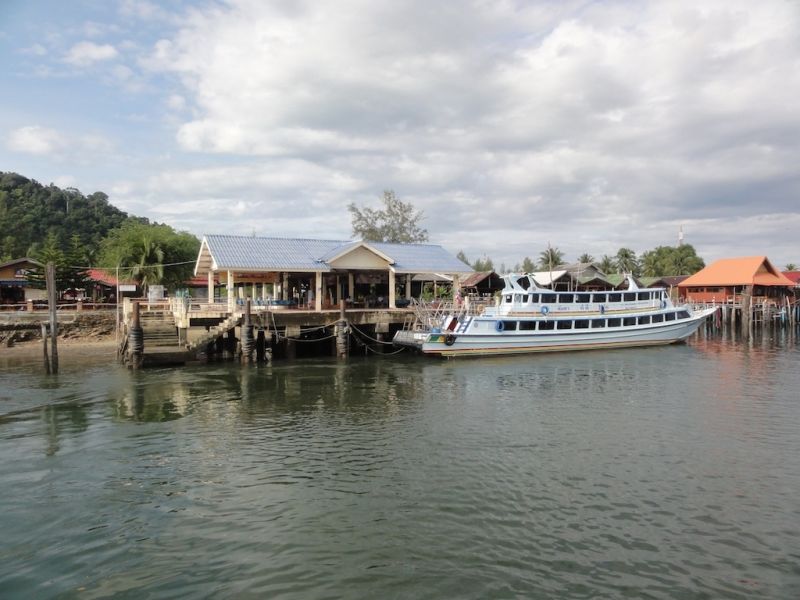
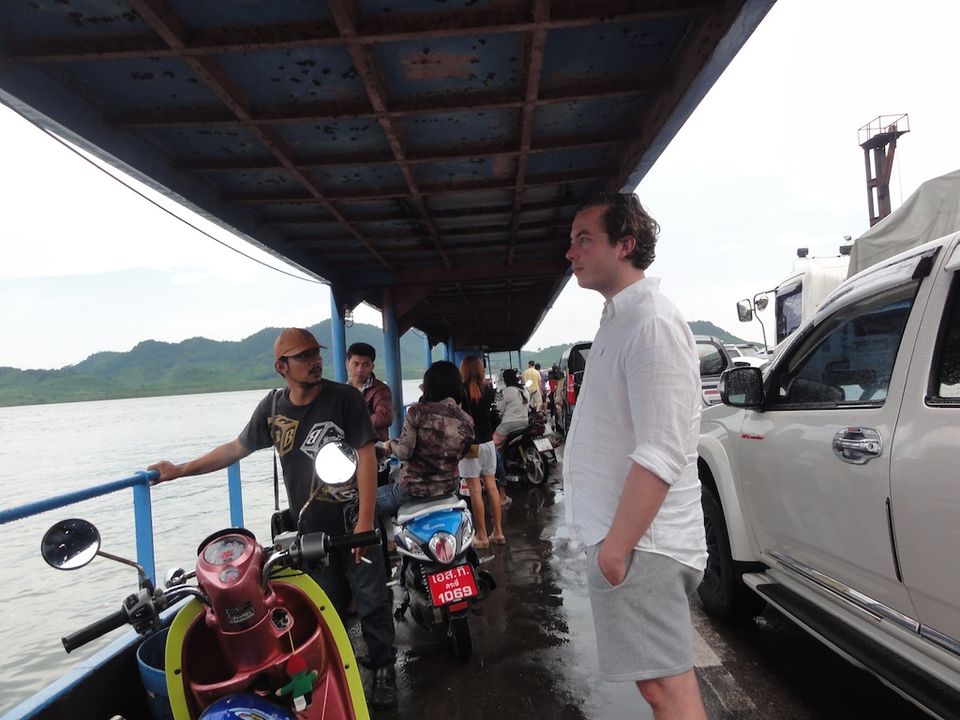
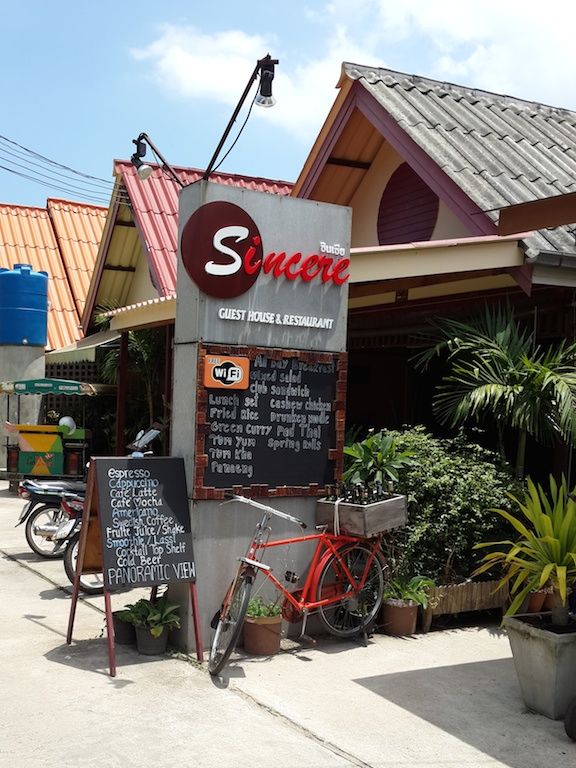
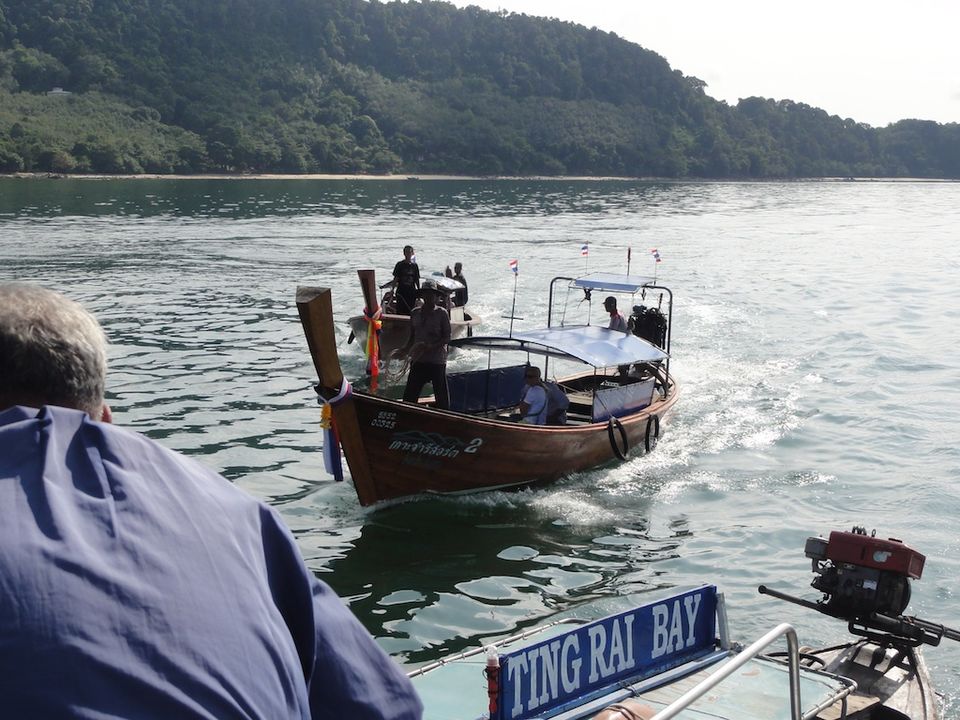
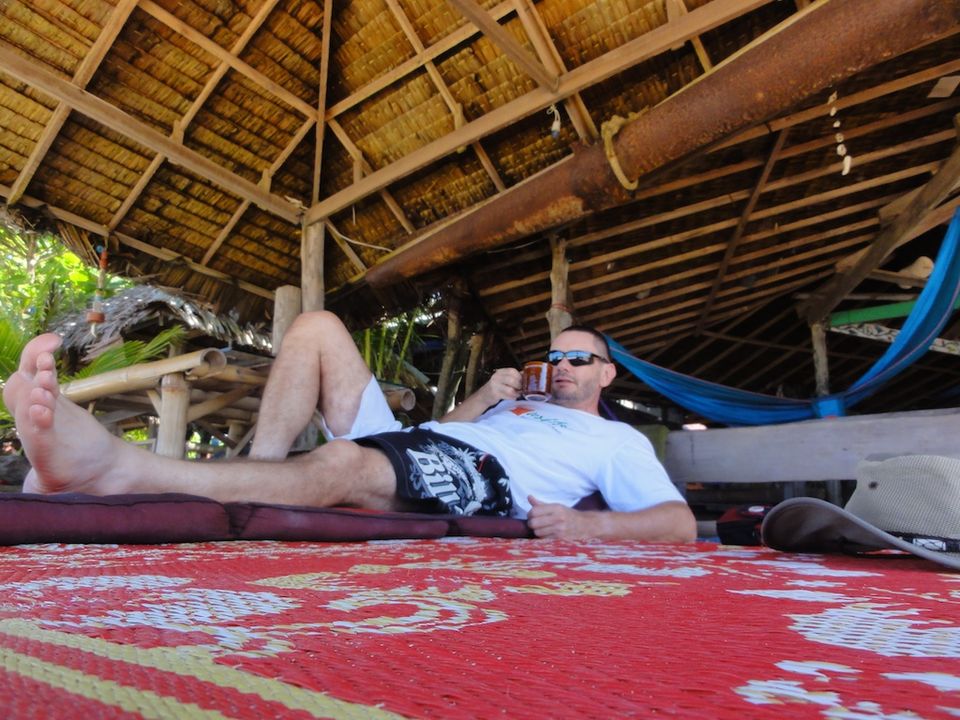

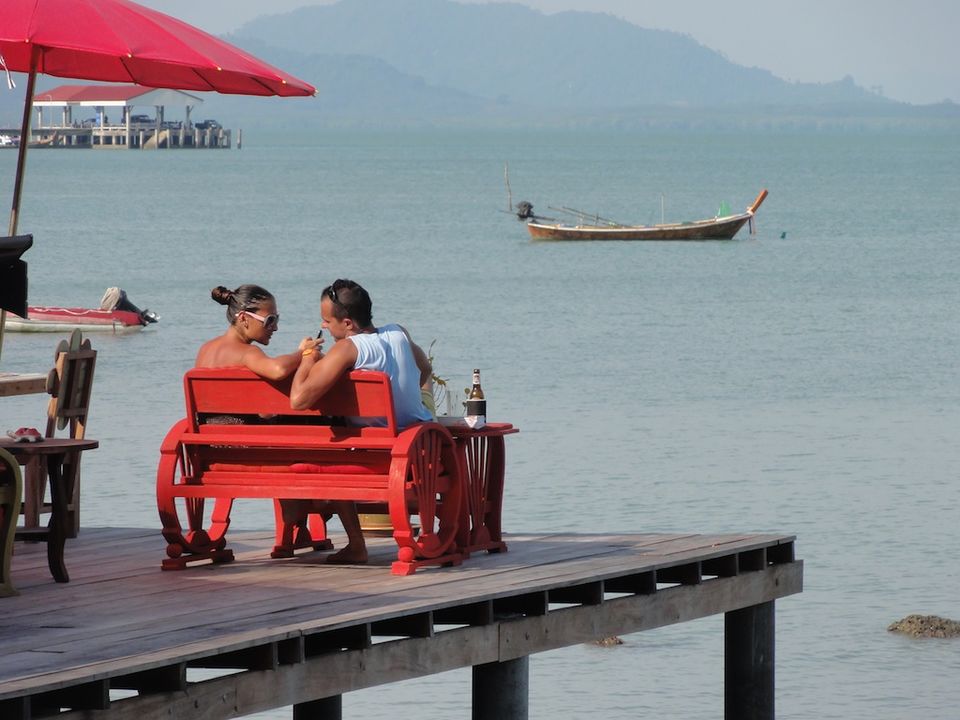
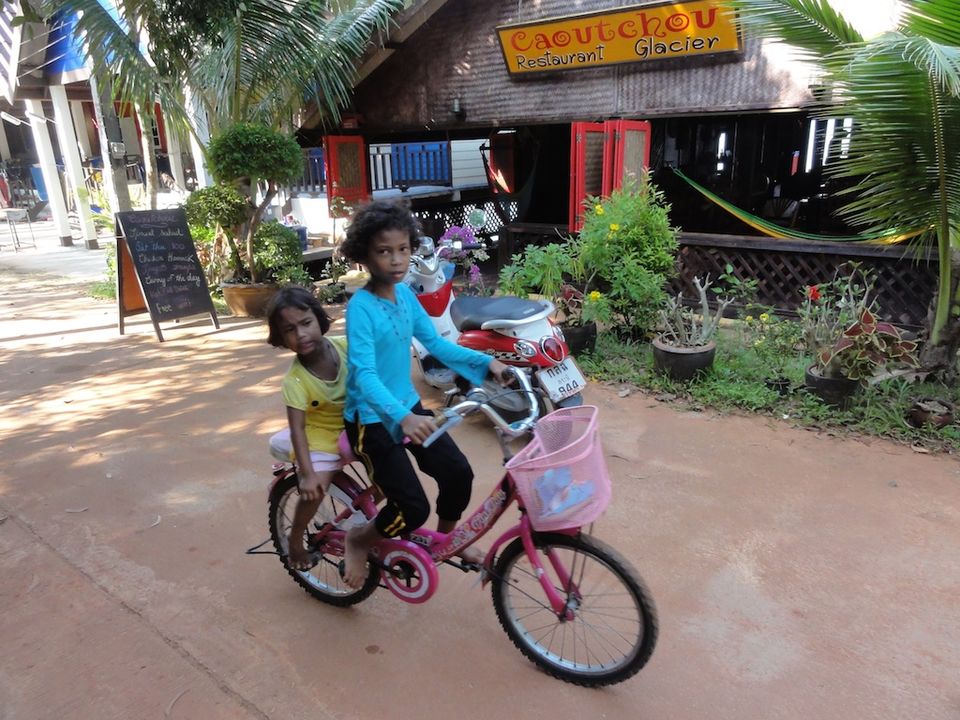
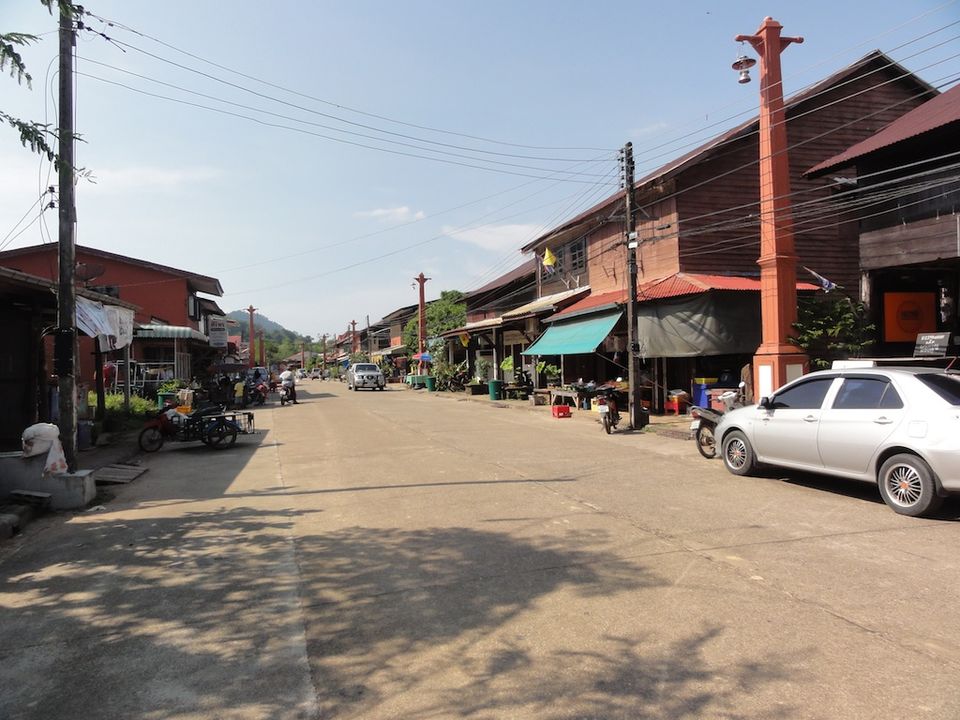
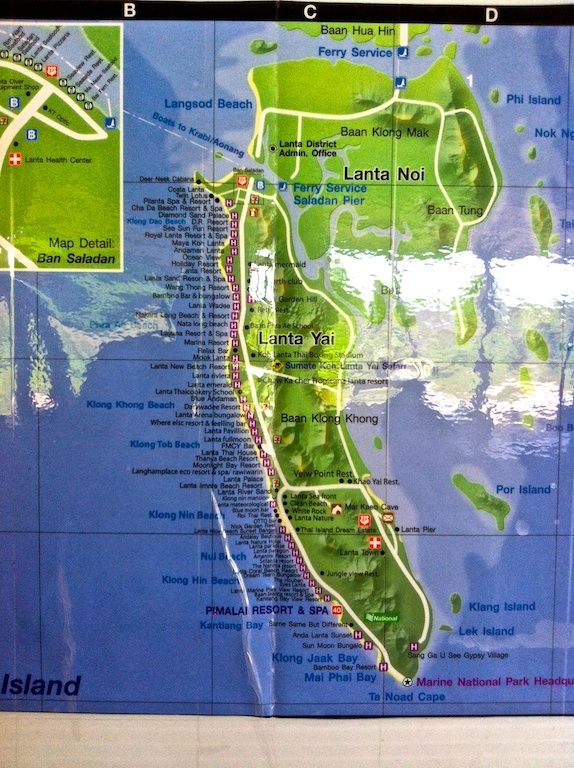
It is likely that many people reading this have not heard of Ko Lanta before.
This is a grievous oversight. Ko Lanta (Ko, “Gor”, being the Thai word for island) is a wonderful destination, it is one of the few destinations that live up to its boasts. What makes it special, as Thailand is replete with islands (and the Philippines has >4,000 islands)?
The answer is both simple and complex. Lanta is a truly beautiful island: it has hills covered with tropical forest, it is surrounded by a gentle, deep blue oceans, and is filled with friendly people (essentially, the Island is crime free). Simply put, if you have spent time in Thailand, and not visited Lanta, then you have not seen everything you should.Geographically, the island is ~700kms south of Bangkok, on the west side of the long, sinuous Malay Peninsula, and is part of the Krabi province of the Kingdom of Thailand.
Getting here is easy enough,though a bit of a chore, as there is no single, uninterrupted route (this can be considered a good thing). From Bangkok you can fly or take a bus to Krabi City, ~12 hours by land, ~2 hours by air. From Krabi, which is a pleasant city in its own right, check out the giant crab and eagle on the river front, you can take a mini-van (300 baht) or a ferry (varies, but around 300 baht) to the island. I suggest taking the ferry. The ferry will transport you over the water to Lanta, with a stop or two at the smaller islands along the way.
The only real disadvantage of the ferry is motion sickness. If a heaving ship causes you discomfort, opt for the bus. During the monsoon season (more on this later), the water can be rough. Keep in mind though, that the bus trip will require two small ferry rides. It is also possible to reach the island by ferry or bus from Phuket.
To explain the necessity of the ferry (if you really want to know), there are two Lanta islands, not one. These islands are imaginatively named Big and Small: Lanta Yai, and Lanta Noi. Lanta Yai, the Big island, is the island that foreigners think of as Lanta, it is where the tourists and resident foreigners live, work, and enjoy life. So, the first ferry crossing from the mainland is to the small island, and the second ferry—you guessed it—is from the small island to the big. Easy.
Lets talk about why the island is as good as it is.So many things. First, the physical environment.The island is beautiful. The perfect mix. The centre of the island is hilly, and covered with a rich green, tropical forest, with a national park on the southern side of the island, perfect for a day visit. Beaches, the west coast of the island faces out into the Andaman Sea, to the Bay of Bengal, facing towards India. For me, it is the beaches that make the island the great place that it is. The first time I visited, I stayed on the west coast, in a small bungalow (500b a night). As was my custom, I went out for breakfast, found a local restaurant on the beach, laid on a mattress on a covered bamboo platform, ordered a mix of vegetarian dishes to break my fast, sat back, ate, relaxed, and watched the world go by.
As I watched I found myself gazing at the water, which flowed back and forth as waves washed and retreated from the shore. I saw clouds slowly and then quickly move across the sky. I noticed people walking through and back across my field of vision. I heard the sounds of the wind, of the water, and of the sea birds. I then looked around and discovered that five hours had gone by. I remembered feeling shocked at this. My busy plans for the day had vanished into the quiet certitude of my peaceful day dreaming.
This was one of the very few occasions that anything like this had happened to me. I am not normally that in tune with nature. However, here I was, staring at the sea for half a day. And what did I then do? I ordered another coconut, a double plate of rice (brown) and veggies, and sat back, and watched the rest of the day fade away into the night. Speaking from personal experience, as a place to relax, Lanta is hard to beat.
The people, the people are another great part of this great island experience. First, the expats. There are a goodly number of expats on Lanta, many of whom run a small or a slightly larger than small business. These are invariably in the field of tourism. Mostly hotels, bars/restaurants, diving, boat excursions, and the like.
These people come from all over the western world. People, who, usually, though not always, are in the second half of their life, and who have travelled before and experienced life, even learnt a thing or two, are now ready to settle down (again), and enjoy their existence by the sea. Lanta attracts the better sort of expat, people who you can meet, sit down with, share time, food, and a drink, and chat about many things, on a first meeting. It is that sort of place.
Second, are the locals. Twenty years ago Lanta was a quiet, largely overlooked island of fisher folk, who are known as “sea gypsies”. Many locals still make a living from the sea, however, tourism has arrived. There are new job and educational opportunities for these people.
Lanta is also a second home to Thais from other parts of the Kingdom, those who come here in search of work, or a new start in life. You will meet many of these Thai folk during your stay, and you will find that 99% of these people are friendly and happy to see tourists on their island, but the one drawback is that there is little English (or any foreign language) spoken. So, while a simple chat, the buying and selling of goods and services, and any basic communication is easy enough, not much more is possible, sadly.
The third group of people you will bump into are the tourists. Tourists arrive every year, stay a few days, or a little longer, do a few of the expected things, and then leave, most never to return. Lanta generates a friendly social environment.
You will find yourself sitting next to tourists, at bars, restaurants, wherever, and a conversation will quickly ensue. Exchange of names, origins, destinations, travel stories and advice, comparisons of hotels, jobs, achievements, the usual mix of travel and human related stories. All great fun. For those who lave lead a sedentary life, at home, where years slide by, with little change, it might seem strange that you can meet complete strangers and so quickly achieve such rapport, but it happens all the time on the road.
Even new friends—or romance—can rapidly come about.
One side of Ko Lanta life is the seasonal flow of tourism. There is a distinct “high season” and “low season”, far more so than most other tourist destinations in Thailand. The high season is the three months following xmas, through to early-mid April.
At that time the transient population triples and quadruples, hotels will double in price, tourism businesses will be booming: with scuba and island hopping boats putting to sea, adventure excursions marching off into the jungle, elephant rides heading to waterfalls, and the island will resound to the busy pitter patter of cheap flip flop sandals being walked back and forth. This is a fun time to visit, where every business hopes to make the bulk of their profit for the year, in twelve short weeks.
The other side of this coin is low season. This varies, but by mid year, many shops, hotels, tourist businesses, and others will have closed or reduced hours. Some expats go home, or elsewhere (sometimes Phuket), or simply sit behind closed business doors, and enjoy a quiet life of friends, family, and pursue their hobbies and interests.
While it is the quiet time, it is the best time to visit, if you want to get a taste of the local lifestyle, and have the opportunity to meet locals, both expats and Thais. During the high season most people are too busy do to more than pass you a menu.
There are two disadvantages to low season. The first is the diving, it is not as good in high season, and diving is a major motivation for many visitors. The second is the weather. You are now in the monsoon season: rain, high winds, and cloudy skies, however, while there are some who hate the monsoons, there are some who have no objection. Put me in the latter category.
In reality, the monsoon is no big deal, rather it can be part of the enjoyment of the island. You can sit out at night, watch lightning flash across the sky, see colourful sunsets across the water, and enjoy wild gusts of wind. The rain, some people complain about monsoonal rain, but, it is warm rain (not the cold rain of Australia), and it is predictable. Rains falls in the late afternoon, most of the time, and maybe a bout of heavy rain once or twice a week. Not a problem. Rather refreshing, actually.
Physically, Ko Lanta is rectangular in shape, maybe 25kms north-south, and 5 kilometres east-west, with most of the population along the coast. Most tourists base themselves on the west coast, facing outwards from the mainland. This entire coast is lined with hotels, restaurants, bars, and shops.
Bungalows on the beach are maybe 1,000b a day, during high season, half that if set back from the beach. There is also a smattering of three and four star hotels. In low season prices can drop, but the price you will pay is largely dependent on your bargaining skills. Bargain, but don’t be annoyingly cheap. I was also told, by one hotel owner (and this is a common sentiment), that if you want the best price, or if you want to enquire about a discount, contact the hotel directly, and not through a booking website. These websites take a commission in the 10% range. That is your discount gone. It is sometimes a bit of trial to find a direct number or email, but make the effort.
The two other tourist spots on Lanta are Sala Dang, the main ferry landing, and Old Town.
Sala is the newer and larger town, on the north east tip of the island, and where there is currently a bridge from Lanta Noi under construction (no rush). It has a busy market (even in low season), where you can buy all the tourist items you can desire (clothes, souvenirs, sports gear, and so forth), and many service shops (711, spectacles, printing, bike repairs—the more mundane side of life). Sala Dang is the main town of the island.
Old Town is on the south east of the island, and is smaller, maybe a one kilometre single road, parallel to the coast. Here you can see the original Thai town, a fishing village, where many locals still make a living from the sea.
I prefer Old Town to any other part of the island. It is picturesque, has small, friendly restaurants, even smaller cafes, and possesses pleasant accommodation. All in sufficient abundance. It is also a quiet place.
Here you can rent a room above a restaurant for 5,000 baht ($150) a month, in low season, twice that in high. Then sit back and watch the tide come in, and then out. On the island you will also need a motorbike, it is the best way to get around. Distances between most places is a few kilometres, and taxis (motorbikes and tuk tuks) are just not that convenient, and somewhat expensive.
To travel between Old Town and Sala San (20 kms and 30 mins) you will be charged 350 baht per person, and the driver will usually ask more for one person. There is also the problem of finding a driver in the low season. If you want to visit the scattered tourist destinations on the island, expect to pay a 1,000 baht for a day’s taxi service. More in the high season.
Renting a bike is easy enough, there are many places where you can do this. The price starts at 250 baht a day, and say 5,000 baht for a month. You are responsible for damage. The renter will ask for ID, usually a passport. Inspect the bike before you drive off, and mention any existing damage or concerns. Be smart, learn to drive the bike safely (if not for yourself then others on the road), and wear a helmet.
I first visited Lanta two years ago, and loved it. I am now back for a few months teaching the children of a local hoteller in exchange for accommodation in one of his villas (cool). This extended stay has given me the opportunity to see more of the island, and to learn a few new skills. I will write more about Ko Lanta, and the best ways of visiting the island, in the coming weeks.

